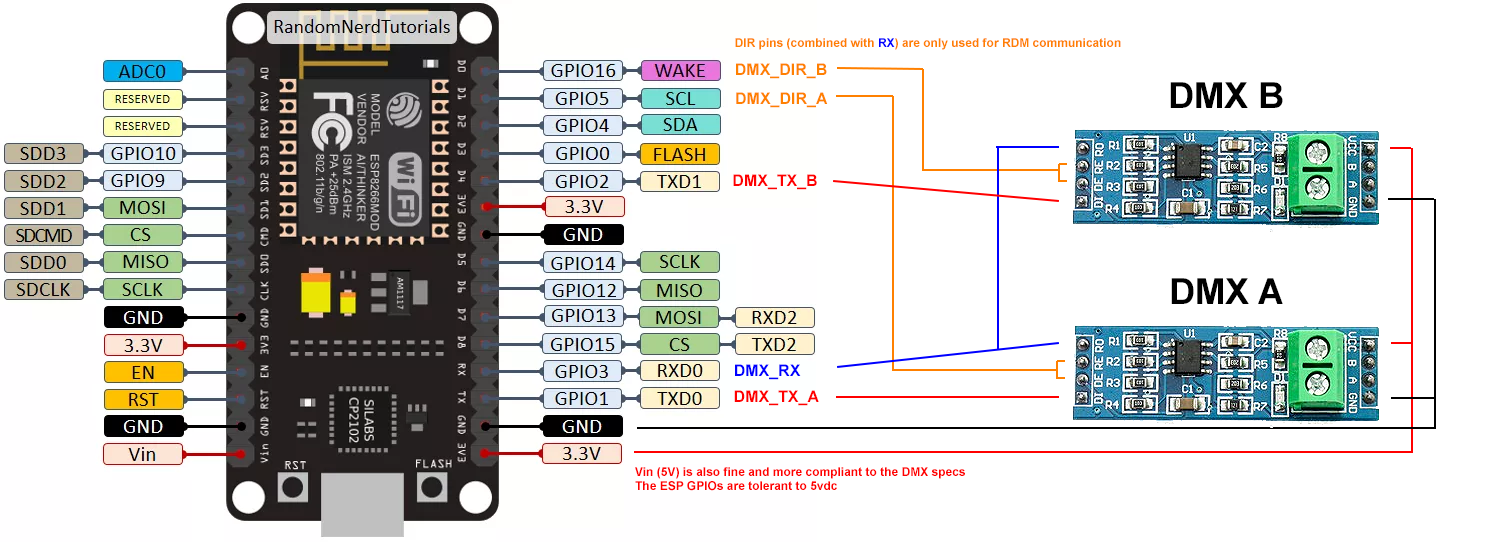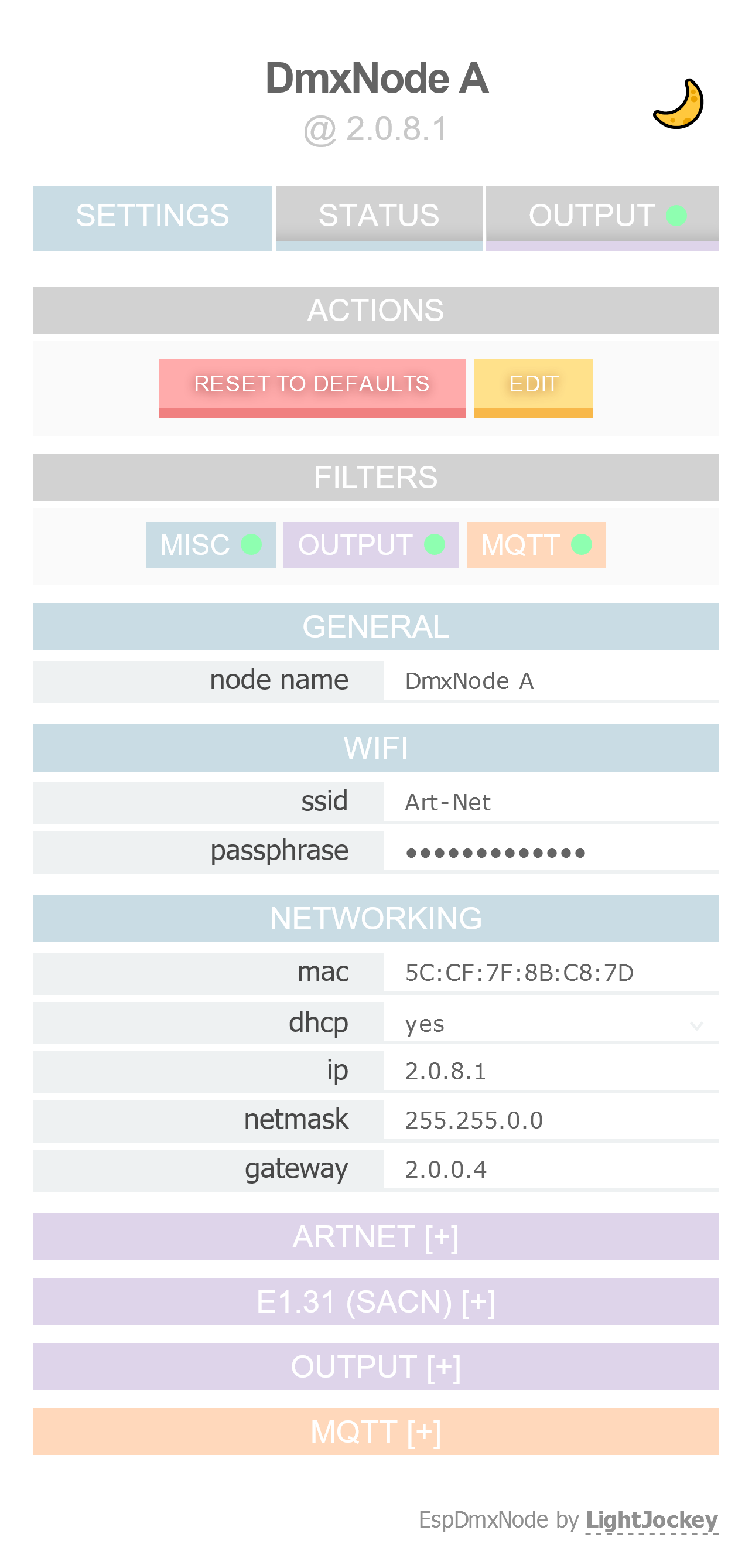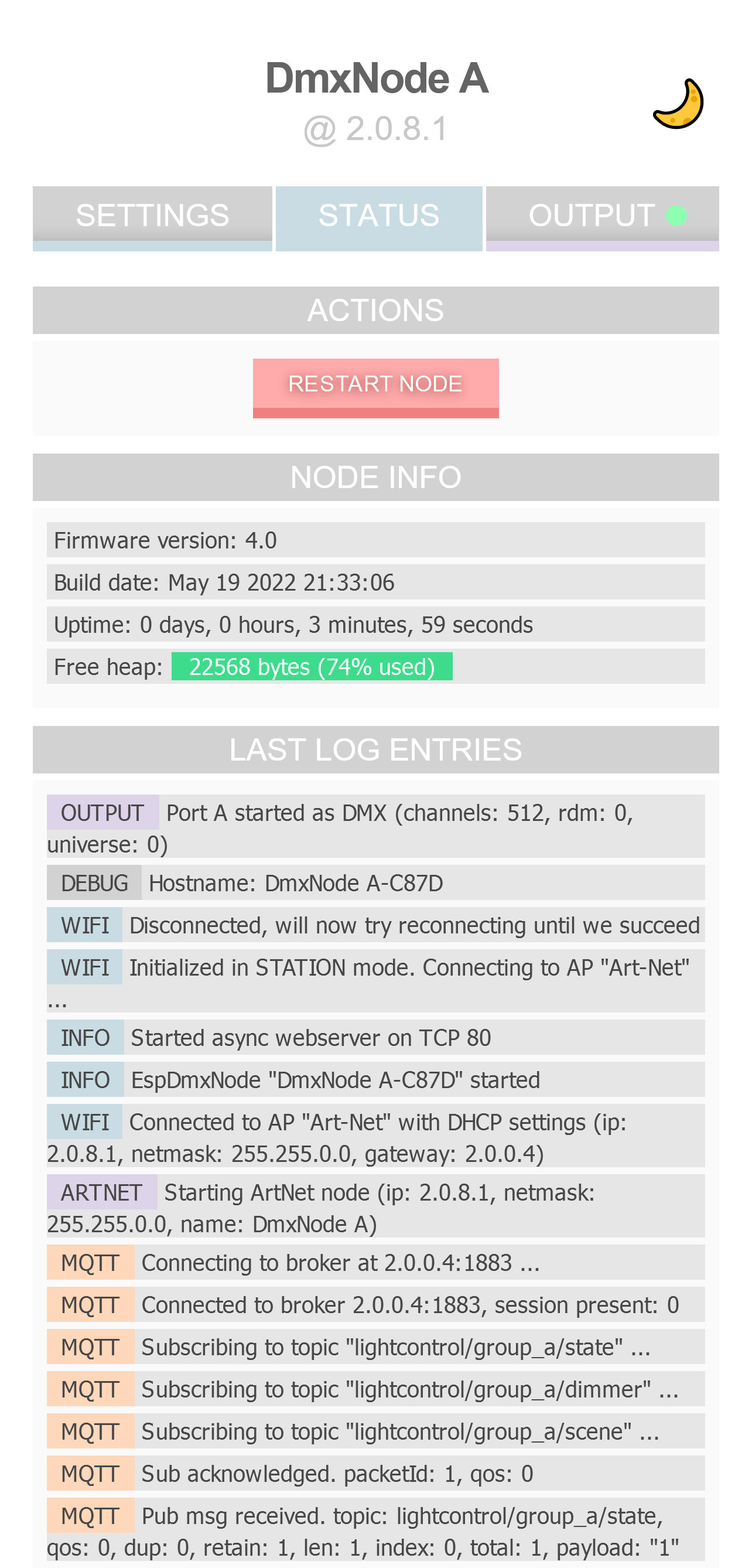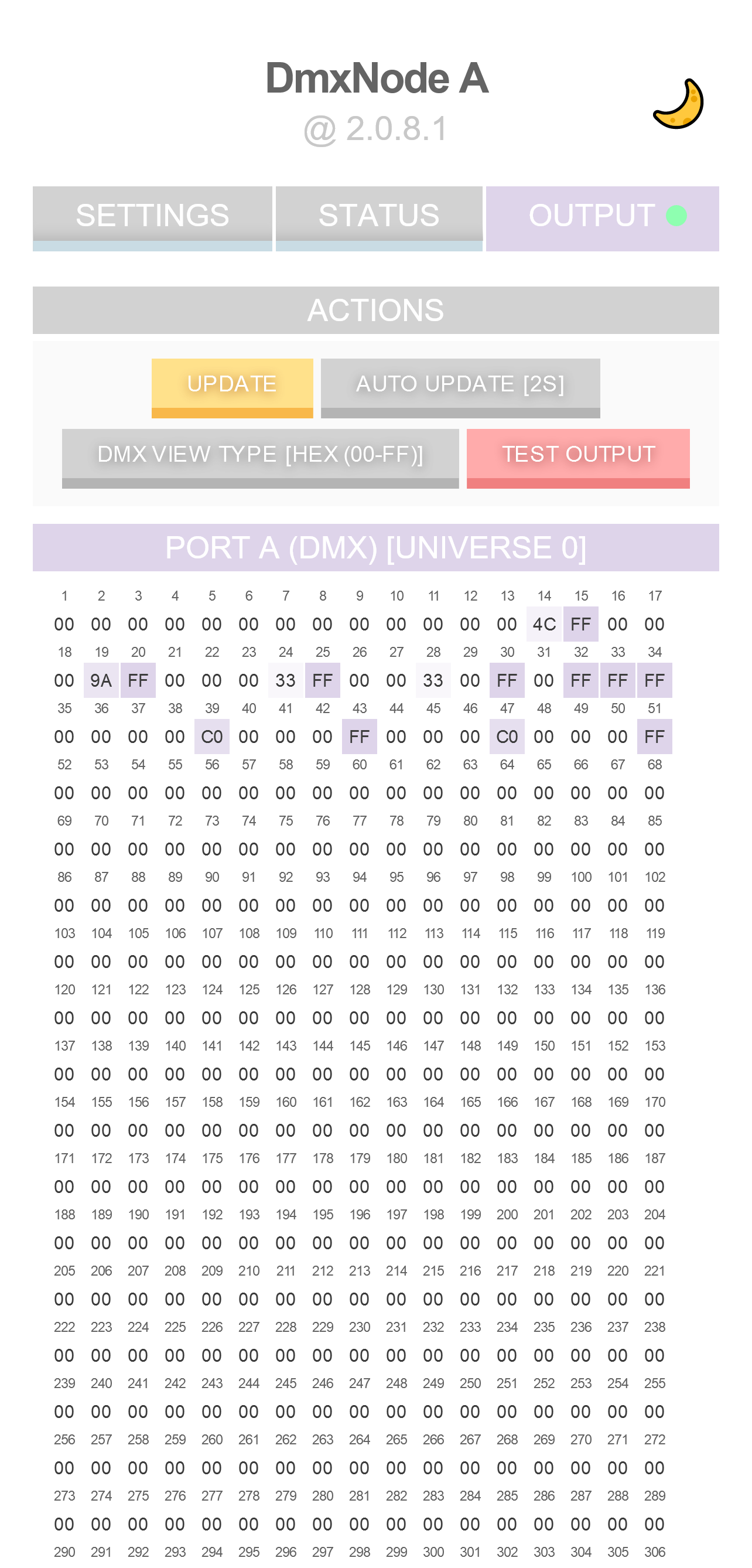An Arduino sketch that turns a NodeMCU board into an Art-Net node.
Specifically built with home automation in mind, exposes MQTT hooks for when DMX alone just ain't enough!
Only ESP8266 is supported (tested on NodeMCU).
Other ESP8266 boards might work as long as they have the required pins and at least 1MB of flash.
- Art-Net
- E1.31 (sACN)
- MQTT (on / off, dimmer, standalone scenes)
2x ports, each can be configured for outputting either:
- A full DMX universe (MAX485 or equivalent IC needed!)
- A NeoPixel line up to 170 RGB pixels (supported chips: SK6812(grb), WS2811, WS2812)
E.g., you can have 2x DMX, 2x NeoPixel lines, or 1x DMX + 1x NeoPixel
- A frontend web app built in Vue for diagnostics & configuration of the node itself
- An access point at first boot used for setting up the node
- Configurable fade times for MQTT input actions
- Configurable frame interpolation to make those pixel lines look buttery smooth even with sub 60Hz input. A snap threshold can be set as well
- 4x standalone scenes that can be recalled via MQTT (values are set on the web frontend. Current implementation is very rough!)
Just wire the data line directly into TX (GPIO1) for port A and D4 (GPIO2) for port B.
Pins cannot be changed, this is a limitation of the ESP8266 itself.
Note that you can't power pixels directly from the board.
Remember to change the port type accordingly in the node's config!
- Grab the precompiled sketch from the releases page
- Flash it with your preferred tool
- Node.js
- Python
- VSCode with the PlatformIO extension installed
- Clone this repo
- Open the folder within VSCode and PlatformIO should set the environment up
- Adjust
platformio.iniwith your board's configuration - Build and upload
If the firmware was flashed successfully then the NodeMCU LED should blink every second to indicate a first time setup is needed.
- Grab your phone and connect to the
EspDmxNode-XXXXwifi access point the node has created - You should be redirected automatically to the node's configuration page. If not, open your browser and navigate to http://192.168.1.1
- Fill in the wifi settings required to connect to your desired AP. Disable DHCP if you wish it to have a static IP within your network
- Save, the node will restart and attempt to connect with the settings provided
- If everything went smoothly, the NodeMCU LED should blink fast to indicate the node is operational and the
EspDmxNode-XXXXAP should disappear
- Support different color layouts and more chips
- Add support for pixel lines spanning multiple universes
- Test longer pixel lines (tested with 50 pixels, but I'm confident a full uni of 170 should be no sweat)
- Iterate over the standalone scenes feature
- Refactor config serialization
AsyncMqttClient by marvinroger
Art-Net and DMX libraries by mtongnz
NeoPixelBus by Makuna



